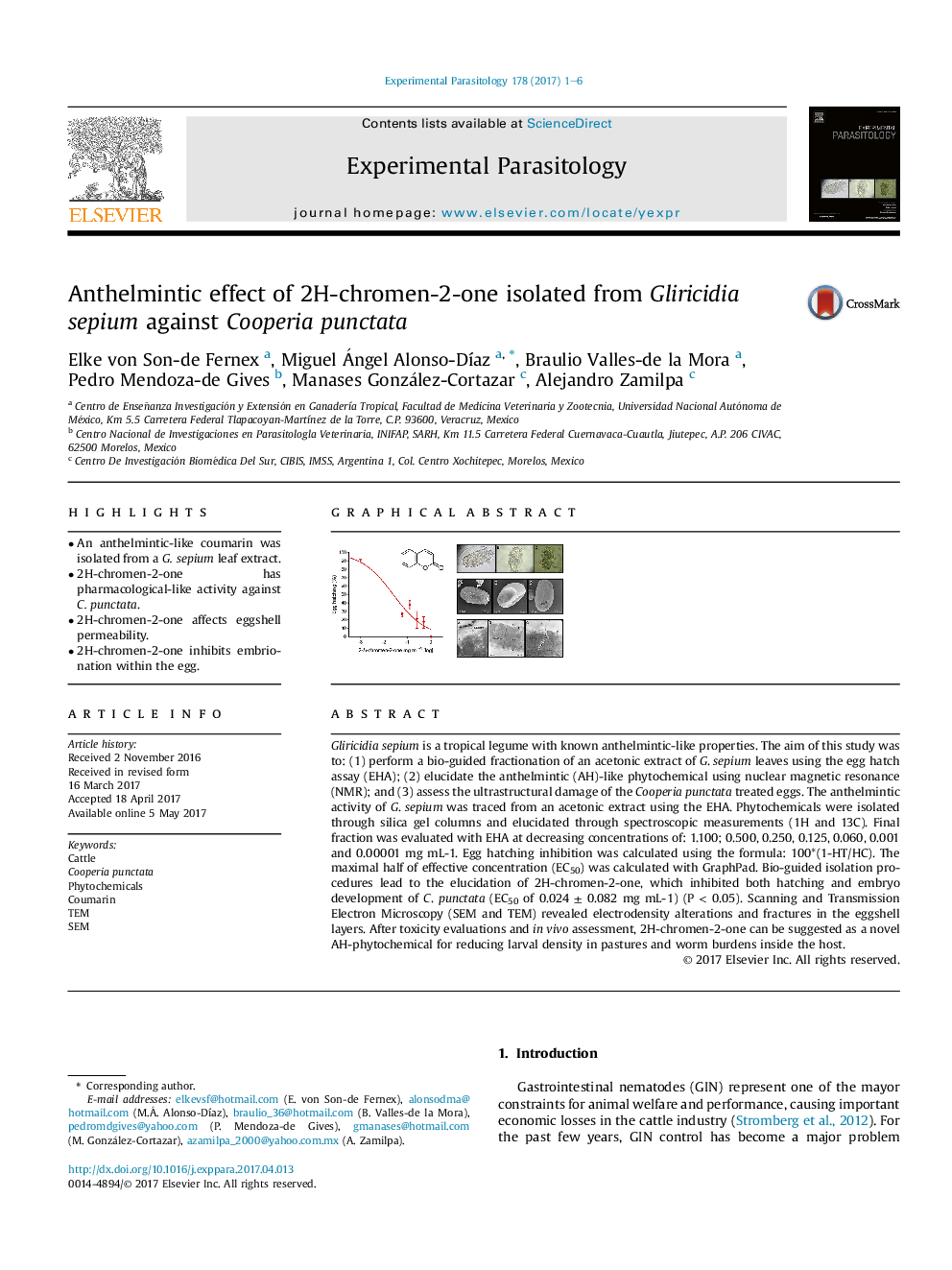| Article ID | Journal | Published Year | Pages | File Type |
|---|---|---|---|---|
| 5741061 | Experimental Parasitology | 2017 | 6 Pages |
â¢An anthelmintic-like coumarin was isolated from a G. sepium leaf extract.â¢2H-chromen-2-one has pharmacological-like activity against C. punctata.â¢2H-chromen-2-one affects eggshell permeability.â¢2H-chromen-2-one inhibits embrionation within the egg.
Gliricidia sepium is a tropical legume with known anthelmintic-like properties. The aim of this study was to: (1) perform a bio-guided fractionation of an acetonic extract of G. sepium leaves using the egg hatch assay (EHA); (2) elucidate the anthelmintic (AH)-like phytochemical using nuclear magnetic resonance (NMR); and (3) assess the ultrastructural damage of the Cooperia punctata treated eggs. The anthelmintic activity of G. sepium was traced from an acetonic extract using the EHA. Phytochemicals were isolated through silica gel columns and elucidated through spectroscopic measurements (1H and 13C). Final fraction was evaluated with EHA at decreasing concentrations of: 1.100; 0.500, 0.250, 0.125, 0.060, 0.001 and 0.00001 mg mL-1. Egg hatching inhibition was calculated using the formula: 100*(1-HT/HC). The maximal half of effective concentration (EC50) was calculated with GraphPad. Bio-guided isolation procedures lead to the elucidation of 2H-chromen-2-one, which inhibited both hatching and embryo development of C. punctata (EC50 of 0.024 ± 0.082 mg mL-1) (P < 0.05). Scanning and Transmission Electron Microscopy (SEM and TEM) revealed electrodensity alterations and fractures in the eggshell layers. After toxicity evaluations and in vivo assessment, 2H-chromen-2-one can be suggested as a novel AH-phytochemical for reducing larval density in pastures and worm burdens inside the host.
Graphical abstractDownload high-res image (320KB)Download full-size image
